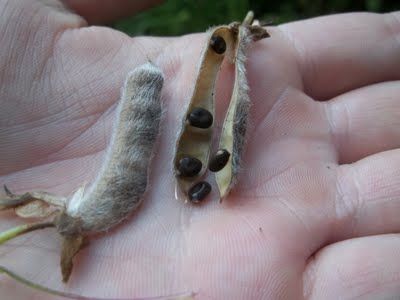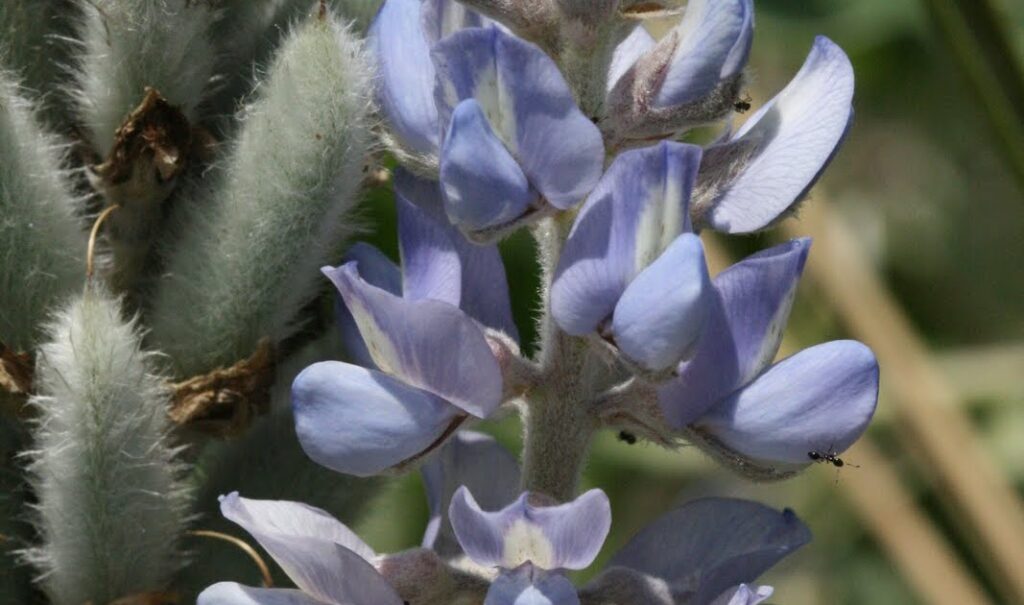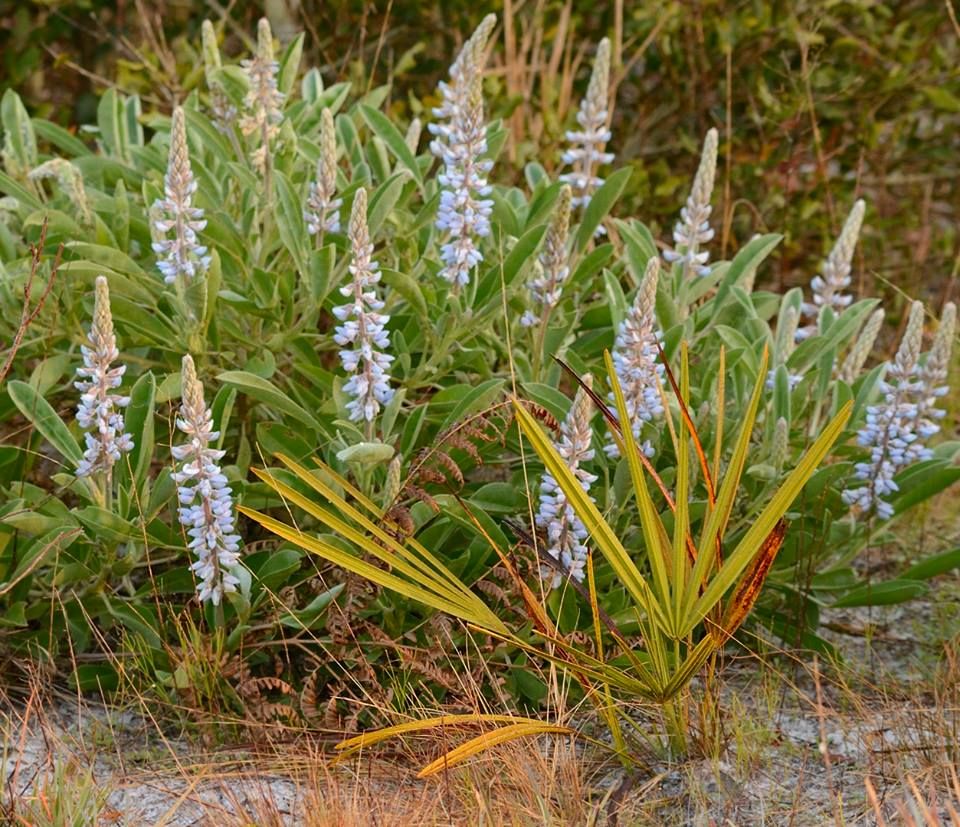Germinating Lupinus diffusus, Skyblue Lupine or Spreading Lupine, from seeds can be achieved following these steps:

- Preparation: Remove the seeds from the legumes seed pod. If very dry, it will easily split open into two halves.
- Scarification: Lupine seeds have a hard seed coat that can prevent water absorption. To increase germination rates, scarification – a process to weaken the seed coat – is often necessary. This can be done either by soaking the seeds in hot (not boiling) water and letting them soak overnight, or by gently nicking the seed coat with a small file or sandpaper.
- Stratification (optional): Lupine seeds may benefit from a period of cold stratification. This is achieved by placing the seeds in a sealed plastic bag with slightly damp sand or peat moss and refrigerating them for a week or two. Please note that not all lupines require this step.
- Planting: Plant the seeds in a well-draining potting mix, about 1/4 to 1/2 inch deep. Place the pots in a sunny location. Lupine seeds generally prefer cooler temperatures for germination, so a location that stays between 55-70°F (13-21°C) is ideal.
- Watering: Keep the soil consistently moist, but not waterlogged. Overwatering can cause the seeds to rot.
- Waiting: Germination time can vary, but you should expect to see seedlings emerge in 2 to 4 weeks.
- Transplanting: Once the seedlings have developed their first set of true leaves (these are the second set of leaves that appear, not to be confused with the smaller, simpler ‘seed leaves’ or cotyledons), they can be carefully transplanted to a larger pot or directly to the garden, if the conditions are right.
Take care to not let the seedlings dry out once they have germinated, and protect them from any potential frosts if they are being grown outdoors. These Skyblue Lupine will bring a variety of new butterfly species to your farm, garden, yard, or patio… one day at a time!


10 Florida-Native Skyblue Lupine Seeds (Lupinus diffusus) for U.S. Southeast
Skyblue Lupine, also scientifically known as Lupinus diffusus, gathered on the Lake Wales Ridge, an ancient sand ridge in central Florida, this fantastic plant has unique traits that not only bring a unique aesthetic appeal but also play an essential role as a butterfly larval host plant. It is native to the southeastern United States, specifically in states like Florida, Georgia, South Carolina, and Alabama.